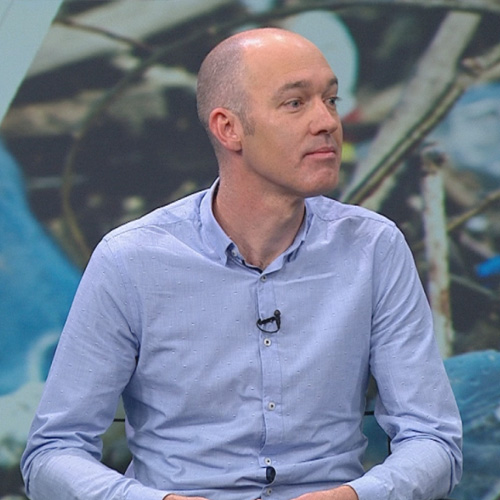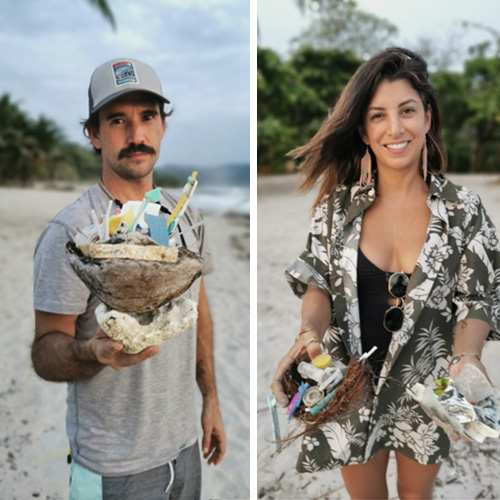
Founder of Sustainable Packaging Research, Information, and Networking Group (SPRING), Robert Lilienfeld, is on a mission to help the rest of us make sense of the increasingly complex array of sustainable packaging options promising to save the world.

Navigating the plethora of sustainable, bio compostable and biodegradable packaging solutions popping up on our supermarket shelves is becoming a bewildering task for the average consumer.
At first glance, almost every piece of packaging we put in our shopping trolleys is “sustainable” “recyclable” or “biodegradable” these days and yet, waste and recycling numbers continue to move in the wrong direction in most countries with landfill piling up and little sign of respite from waste in the world’s oceans.
To make sense of everything from boxed water to compostable polymers and a new family of bioplastics, the world needs voices it can trust, experts with the experience to be able to cut through the greenwashing and call out solutions that take us backwards rather than forwards.
That’s one of the reasons circular economy veteran, Robert Lilienfeld, founded the Sustainable Packaging Research, Information, and Networking Group (SPRING), to bring together a selection of like-minded sustainability super heroes to save us from an everyday onslaught of supposedly eco-friendly solutions cluttering up the packaging panorama.
“I’ve been working in what we now call the sustainability space for over 25 years, and over that time, I’ve gone from being very optimistic to very pessimistic to being very optimistic and back and forth. I think what’s finally put me over the edge, if you will, is the sheer amount of misinformation regarding packaging and sustainable versus unsustainable packaging,” says Lilienfeld.
For the average layman, navigating the supermarket aisles seeking a clue to which container is better for the planet, the definition of sustainable sits somewhere in between recyclable, reusable or biodegradable and yet, according to Lilienfeld, function often gets thrown out of the window when making dodgy decisions regarding materials that simply don’t get the job done.
“A sustainable package is the package that gets you 100 percent of the value of the products that you’re purchasing and does that with the least amount of waste,” he says. “That’s the most sustainable package. Obviously the more recyclable the packaging is probably the better solution but hidden in that word, recyclable is the real problem behind what you could consider greenwashing,” he says.
There’s Recyclable and there’s Recyclable
Pledges by global consumer goods companies to make all their packaging recyclable by 2025, coupled with the rise of recycle behemoths like Terracycle, which promise to recycle everything from ketchup sachets to used toothbrushes, there’s been a rush to muddy the waters on what is, and isn’t, really recyclable.
“When I hear the word recyclable, in my mind I see that package going into somebody’s home or into their community or their town. The packages are picked up, it’s washed and it’s turned into another container. That, to me, is recyclable packaging,” says Lilienfeld.
“But in the world of recyclability, a lot of the time ‘recyclable’ only means that it has the potential to be recycled and that’s where a lot of greenwashing comes in because when a manufacturer says this package is recyclable, the consumer thinks ‘oh good, it’s going to turn into something else’. Well, the reality is it probably means it could be turned into something else. When you recognize that only about eight or nine percent of packaging, at least in the United States, is actually recycled, then you have to see that there’s a very, very big gap.”
To close the gap between what is and isn’t recyclable Lilienfeld says we have to do two things: one is to improve the consumer’s understanding of what recyclability means and the second is holding consumer packaged goods companies marketers to a higher standard.
“They all know the difference,” he says. “The question is how do we get them to go beyond what is simply a legal definition, to do what I would say is ethically right, socially correct or morally right?”
The key to SPRING’s success, argues Lilienfeld, will be its subject matter expert network, a group of highly regarded experts in fields such as Polymer Science, Materials Science, BioPlastics, Mechanical Recycling, Chemical Recycling, Life Cycle Assessment, and Supply Chain Packaging that are eminently qualified to call companies to account and educate consumers about what is and isn’t sustainable.
With a new slay of words being bandied around to amplify a product’s attractiveness for well-meaning consumers, the lexicon is becoming increasingly confusing. Beyond understanding when something is and isn’t recyclable we also now need to understand if something is compostable or biodegradable, which of course, all things are to varying degrees.
“The difference between potential and reality and composability is a very, very good example,” he argues. “There’s a big difference between whether something is biodegradable or whether it’s compostable. Things that are compostable must biodegrade, but things that biodegrade don’t necessarily have to be compostable. So there’s a lot of confusion there on the part of consumers.”
Rules Needed to Create the Right Conditions for Recycling
Placing all the burden on the consumer to spot a dud bit of packaging, isn’t a sustainable solution, he argues, regulators also need to hold producers to account and create the incentives for them to put systems in place that will increase the reuse of precious materials by putting a price on those materials.
One of the best examples of the impact of effective regulation can be seen in the stark difference between recycling rates for PET bottles in the US states with bottle deposit schemes when compared to those without.
“PET is a great example,” he says. “There’s a significant amount of PET that is recycled, but the driver for recycling PET, at least in the United States, is the bottle deposits and there’s an enormous difference between the states where bottle deposits exist and where they don’t. In the 10 states in the United States that have bottle deposit laws of 5¢ or 10¢ per container, the collective recycling rate is about 54 percent. In the area of the country where there isn’t recycling going on it’s less than half of that. So we know what the driver is. It’s whether or not there’s political will.”
Results, he says show that the way to bring about change is to “force consumers to change their behavior and by their behavior, in this case, what I mean is paying deposits and returning their containers or getting companies to change their behavior and to pay for systems where they’re responsible for the packaging that they produce.”
A Philosophical Approach to Solving The Problem (or not!)
The recent mobilization of stakeholders from all sides to sign up to the United Nations Environment Programme’s Treaty to End Plastic Waste was a symbolic beginning to a broader collective awareness of what is needed across the world to bring an end to plastic waste by making smart choices about other things, the type of packaging we use.
Ultimately, according to Lilienfeld, it’s going to require a philosophical realization from all of us that we need to work together and listen to nature if we want to tackle the biggest issues we currently face as a species: waste, the climate crisis and biodiversity loss.
“Whether you’re a religious person or not, you have to believe in the value and the power of nature and nature is agnostic. Nature is amoral. Nature just is and nature measures things through science,” he says.
“What I mean by that is if we look at issues like global warming or climate change, which is an issue that I’m primarily concerned with, nature keeps score in one way and that way is how much greenhouse gas is either entering or leaving the global environment, the atmosphere at any point in time,” he adds.
“The only way to keep score is the sheer amount of carbon dioxide or methane molecules. Nature doesn’t care where those molecules come from. If I look at things from that perspective, it forces me to take a more scientific view of reality and to push aside my own concepts relating to what’s right or wrong and to really take the ideology out of the issue and that’s really what SPRING is designed to do.
“We are a collection of consultants, scientists, academics and engineers whose primary belief is in the power of science we have. We are different people, we have different politics, we have different ideologies, but we all respect each other’s scientific drive and knowledge. And therefore we always focus on what nature’s telling us from a scientific perspective.”
If we’ve learned anything from the last two years, from the trauma of living through a global pandemic, it’s that we need to take care of each other, says Lilienfeld.
“We have to find a way to get people to understand that each of us is responsible for all of us and this is an earthshaking paradigm for people. It’s very hard for a fairly large percentage of people to understand that what they do impacts others. These are issues where you can’t simply say, I’m going to do what I think is right. We all have to do what’s right for everybody? And boy, that is the single biggest task humanity has ever faced.”
Share it
Useful Links
THE HISTORY OF PLASTIC
Throughout the history of plastic, PET has been crucial in keeping food fresh with lightweight and durable packaging solutions that have helped reduce food waste for almost a century. Learn all about the invention of plastic and the important role it has played feeding people and saving the lives of humans and elephants in the adaPETation® timeline of the history of plastic.





